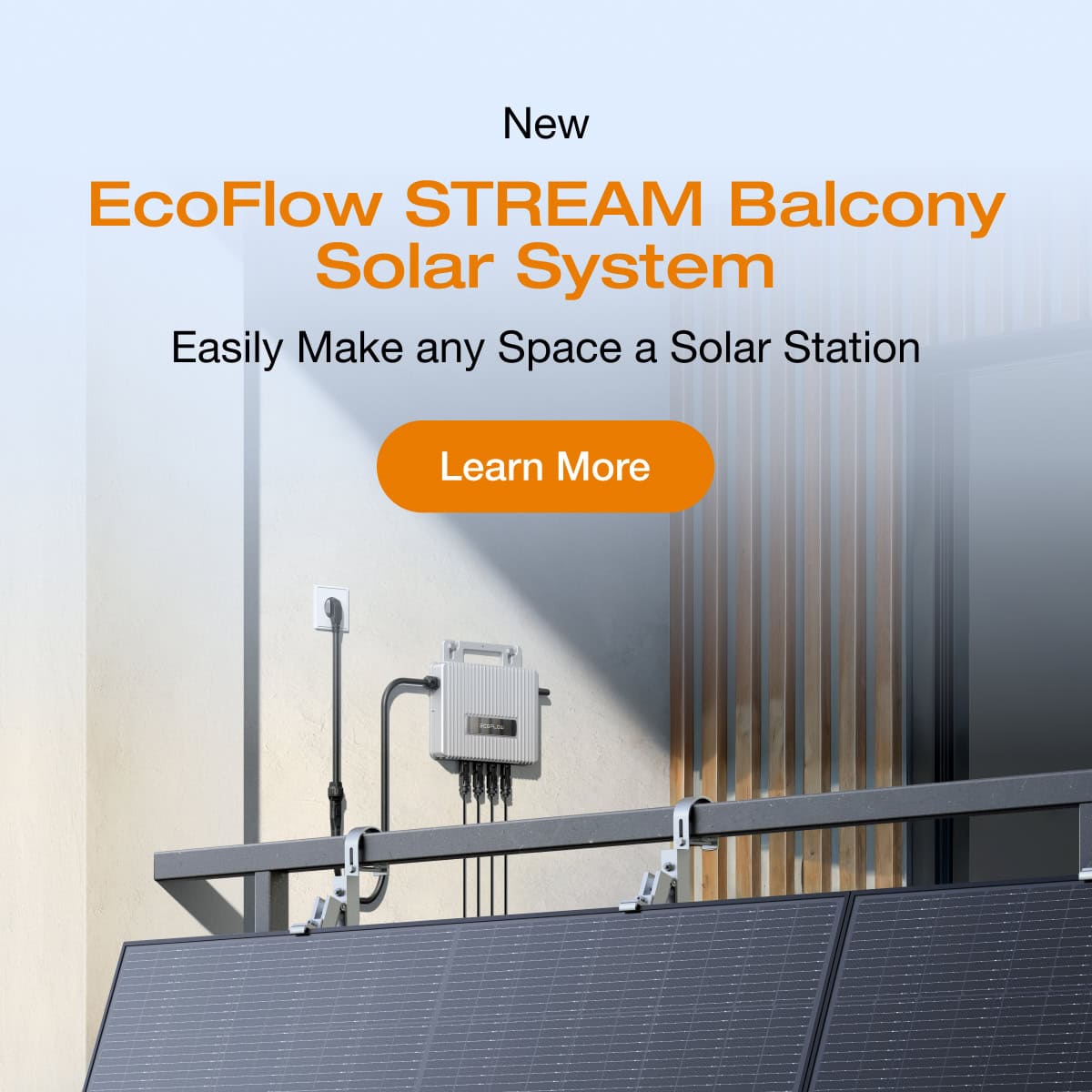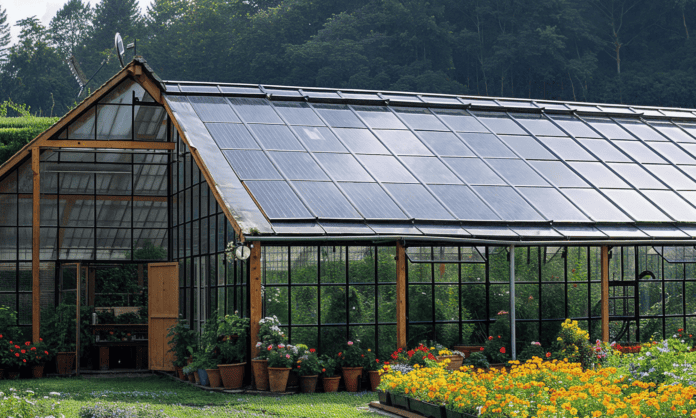Table of Contents
If you have or want to build a greenhouse and are considering heating it to grow food all year round, solar panels, also called photovoltaics or PVs, are the way to go. Solar energy is perfect for greenhouses since you’ll already have your greenhouse in an area with optimum sunlight.
Solar energy is clean and green, so you can enjoy a wide variety of fresh fruits and vegetables even in winter without having to have them trucked in from tropical climates at significant environmental cost.
Let’s take a look at how to heat a greenhouse with photovoltaics.
How Do Solar Panels Work for a Greenhouse?
On or Off-Grid?
First, you must decide if your greenhouse is on the grid (connected to a utility company’s electricity) or off-grid. If your system is off-grid, it means you’ll need a solar generator system complete with battery storage so that you can store the excess energy your photovoltaics produce during the day when the sun is shining.
Then, it can be used at night or during bad weather when your panels are not generating enough power on their own. Staying on-grid means you don’t need to spend the extra money on batteries; you can just buy the photovoltaics.
The drawback of a grid-tied system without battery backup is that you’ll be at the whims of the grid if the power goes out, which could cost you dearly in the winter. No matter your choice, your energy will still be mostly or completely powered by the sun, helping combat climate change while also saving money on your electricity bill.
How Many Solar Panels Do I Need for a Greenhouse?
How many photovoltaics you need depends entirely on your energy usage. You can calculate your energy usage by adding up the watts from each piece of equipment you’ll be using. If you already have a heater, check the wattage.
If you haven’t yet set up your system, how much heating you need will depend on the square footage of your greenhouse and how well it holds heat. A small greenhouse may only need a single 400W solar panel to heat it, while larger greenhouses will need several.
Also, remember to include things like lighting and pumps for your automatic irrigation systems. The watts needed for these will need to be added to your total to determine how many panels you need.
The number of panels you need will also depend on the rated power of your photovoltaics, their efficiency rating, your exposure, trees that may shade them, and other local environmental factors like the number of peak sun hours.
All those factors must be considered to determine how many photovoltaics your greenhouse needs.
How to Heat a Greenhouse With Solar Panels
1. Plan Panel Placement and System Components
To choose the best photovoltaic system for your greenhouse, consider what you need and where your components will be installed.
For instance, how much space do you have on your greenhouse roof, and will that roof support the weight? You also need to consider where the sun shines since you want to put your PVs facing the sun to get the most out of them.
For those living in very hot climates, ensure you have a gap beneath your panels to allow for airflow to help dissipate the temperature; you may even want to face them east or west instead of south since very high temperatures will reduce your efficiency and overall lifespan of your panels.
EcoFlow Rigid Solar Panels are perfect for permanent roof installations with their durability and impressive 23% conversion efficiency. If your roof doesn’t support your panels, you can always install them on the ground.
Another option is to use EcoFlow Portable Photovoltaics Panels if you are short on space and direct sun and want to be able to move your panels around to optimise the incoming sunlight.
If you want to continue growing into the summer in a hot climate, you should consider an air conditioner like the EcoFlow WAVE 2 Portable AC. That unit’s bonus is that it can heat your greenhouse in the winter and cool it in the summer, making it an all-in-one option.
2. Think About Thermal Mass
Think about your thermal mass, which is things that can absorb, store, and release heat. Materials like stone, concrete, water, and gravel all increase thermal mass because when they heat up, they will release that heat slowly, warming the air around them.
Having good thermal mass in your greenhouse design is essential. For example, gravel is a perfect choice for a greenhouse floor since it increases thermal mass and allows water to drain.
Other great options are water barrels, which hold water and release heat at night but can also be used to water plants for those using automatic irrigation systems. Be sure to close off your barrels to prevent evaporation and high humidity since high humidity can increase many common plant diseases.
3. Gather the Required Tools and Components
Order your photovoltaics, battery storage if you’re going off-grid, and any additional tools you’ll need, including wires, screwdrivers, and mounting system components, which will vary with the type of set-up you use.
4. Install and Connect the Panels
Install your brackets or mounting system first, then attach your panels. Next, you need to connect all of your panels together in series.
5. Install the Solar Battery and Inverter
Use a solar battery like that in EcoFlow’s Solar Generators. They’ll already have a built-in inverter that converts the DC electricity produced by your solar panels and stores it in your battery into the AC electricity that appliances like heaters use. All you need to do is connect your panels to your battery system.
If you’re tying your solar greenhouse to your household electricity, you must connect the solar battery or inverter to your house’s circuit breaker panel.
Note that keeping your solar battery out of the greenhouse is a good idea since the high humidity could cause problems over time.
6. Install and Connect Your Heater And Other Devices
Depending on your system, you can plug your heater into your solar battery or into the greenhouse’s electrical system. You can even tie it all into a thermostat for easy automatic temperature control. Also, don’t forget to connect any lights, pumps, or other components to your system.
Benefits of Using Solar Panels to Heat a Greenhouse
Grow Warm Season Food in Cold Climates
Using solar panels to heat your greenhouse, you can grow more warm-season crops like tomatoes and peppers in cold climates without contributing to climate change.
Grow Food All Year Long With Perfect Temperatures
No matter your climate, you can still grow food, no matter the season. Using the EcoFlow WAVE 2, you can heat your greenhouse in winter and cool it in summer. This is a great option for those living in desert climates that get very hot in summer but still can have very cold nights in the winter. Using photovoltaics, anyone can grow food all year long.
Save Money on Electricity
Even though installing photovoltaics requires an upfront investment, once installed and you reach the solar payback period, your energy is completely free when you achieve a return on your investment.
Energy Independence – No More Irrigation Power Outages
When you build your system with a battery, you’ll never have to worry about power outages again. This could be critical if the grid goes down in winter and your plants freeze without power. The same problem could happen in summer if you depend on air conditioners to keep the temperature tolerable for your plants.
Promotes Sustainability and Doesn’t Contribute to Climate Change
Of course, since photovoltaics harness energy from the sun and don’t need fossil fuels to run, they operate on sustainable renewable energy that doesn’t contribute to climate change.
Consistent Temperatures For Healthy Plants and Maximum Yield
Because you’ll be able to maintain more or less consistent temperatures in your greenhouse, you’ll be able to optimise your growing conditions and achieve the maximum yields possible since your plants won’t be struggling in cold or suffering from heat stress in summer.
Easy Installation and Low Maintenance
Photovoltaics are relatively easy to install, and the best part is that once they’re installed, they require virtually no maintenance. Depending on your climate and other local conditions, you may need to rinse the panels off once or twice a year to remove dust and debris.
Quiet Operation
The days of noisy, smelly fossil-fuel generators are a thing of the past. When you use solar generators instead, you can enjoy super-quiet operation. The loudest thing will be your heater, which will be inside your greenhouse, so there’s no need to worry about noise anymore.
Final Thoughts
Using photovoltaics to produce energy is becoming increasingly popular in many applications, and solar greenhouses are no exception. Using energy from the sun, you can heat your greenhouse in the winter and even cool it in the summer in hot climates, allowing you to grow food all year round without contributing to climate change.
Before ordering all of your components, be sure to factor in how many EcoFlow Solar Panels you need, how they’ll be placed, what kind of mounting system you need, and whether or not you want the recommended battery backup. From there, it’s just a matter of hooking it up and harnessing clean energy from the sun to control the temperature of your plants while they use that same energy to grow. You can’t get a more efficient or more compatible system than that.







